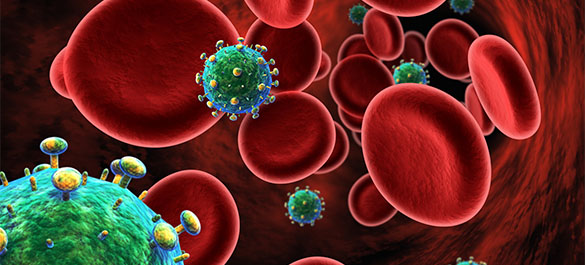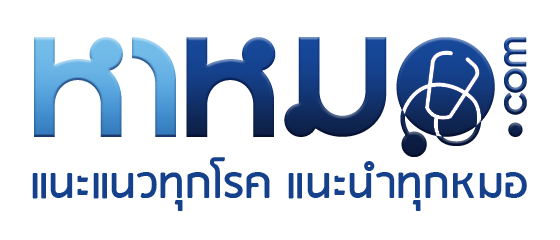
การจัดการภาวะแทรกซ้อนยาต้านรีโทรไวรัส ตอน 20
- โดย ภก.วิชญ์ภัทร ธรานนท์
- 24 ธันวาคม 2561
- Tweet

สาเหตุ
ภาวะไขมันย้ายที่แบ่งได้ 2 กลุ่มอาการแสดง คือ ภาวะไขมันฝ่อ (lipodystrophy) และภาวะไขมันเกิน (lipohypertrophy) ผู้ที่มีภาวะไขมันฝ่อจะมีแก้มตอบ ขมับตอบ แขนขาลีบ เห็นเส้นเลือดดำที่แขนขาชัดเจน กันและสะโพกปอด เนื่องจากเซลล์ไขมันฝ่อจากภาวะเป็นพิษต่อไมโทคอนเดรียและการสลายตัวของเซลล์ไขมัน (adipocyte apoptosis) หรือปัจจัยทางพันธุกรรม มักเกิดจากยาในกลุ่ม NRTIs ที่เรียกว่า thymidine analogue ซึ่งพบใน สตาวูดีน (stavudine) มากกว่า ซิโดวูดีน (zidovudine) และ ไดดาโนซีน (didanosine) ตามลำดับ โดยเฉพาะถ้าได้รับยาร่วมกับ เอฟฟาไวเร็นซ์ (efavirenz) หรือยากลุ่มโปรติเอส อินฮิบิเตอร์ (PIs) และริโทรนาเวียร์ (ritonavir)
ส่วนภาวะไขมันเกินพบได้ในยากลุ่มเอ็นเอ็นอาร์ทีไอ (NNRTIs) กลุ่มโปรติเอส อินฮิบิเตอร์ (PIs) และกลุ่ม INSTIs โดยเฉพาะถ้าใช้ร่วมกับยาสตาวูดีน หรือซิโดวูดีน ผู้ป่วยจะท้องโต เนื่องจากมีไขมันในช่องท้อง เต้านมใหญ่ขึ้น มีก้อนไขมันที่ต้นคอ เนื่องจากมีการสะสมของไขมันเพิ่มมากขึ้น สาเหตุของการสะสมไขมันยังไม่ทราบแน่ชัด แต่อาจจะมีความสัมพันธ์ระหว่างยากลุ่ม PIs กับการแบ่งตัวของเซลล์ไขมัน ภาวะไขมันย้ายที่ในผู้ป่วยติดเชื้อเอชไอวีนั้นผู้ป่วยบางรายอาจพบเฉพาะไขมันฝ่อหรือไขมันเกิน หรือพบได้ทั้งสองชนิดในรายเดียวกัน นอกจากนี้อาจมีภาวะอ้วนลงพุง ความดันโลหิตสูง ไขมันในเลือดสูง และภาวะดื้ออินซูลิน รวมเป็นกลุ่มอาการอ้วนลงพุงซึ่งพบในผู้ป่วยเอชไอวีที่ได้รับยาต้านรีโทรไวรัส ทั้งนี้ถือเป็นหนึ่งในปัจจัยเสี่ยงต่อโรคหลอดเลือดหัวใจ
การวินิจฉัย
การวินิจฉัยมักเกิดจากที่ผู้ติดเชื้อเอชไอวีสังเกตและรู้สึกตัวเองว่ามีรูปร่างหน้าตาที่ เปลี่ยนไปและแจ้งแพทย์ หรือแพทย์สังเกตเห็นได้ก่อนในกรณีที่มีอาการหรืออาการแสดงไม่มาก การตรวจยืนยันทางคลินิกด้วย การวัดความหนาของผิวหนัง การวัดเส้นรอบแขนหรือขา รวมถึงการทำภาพรังสีคอมพิวเตอร์ เอ็มอาร์ไอ และDual-energy X-ray absorptiometry (DXA) เพื่อตรวจปริมาณและตำแหน่งไขมันมักไม่ได้ทำในทางคลินิก เนื่องจาก ราคาแพงและไม่ได้ดีกว่าการวินิจฉัยด้วยอาการทางคลินิกและการตรวจร่างกาย การตรวจวัดเส้นรอบเอวและสะโพกเป็นอีกวิธีการหนึ่งที่ทำได้ง่ายเพื่อวินิจฉัยภาวะไขมันเกิน ถ้าอัตราส่วนระหว่างเส้นรอบเอวและสะโพกมากกว่า 0.95 ในผู้ชายหรือมากกว่า 0.85 ในผู้หญิงหรือการใช้เส้นรอบเอวอย่างเดียว คือ ตั้งแต่ 102 ซม.(40 นิ้ว) ขึ้นไปในผู้ชายหรือมากกว่า 88 ซม. (35 นิ้ว) ในผู้หญิง อาจจะช่วยในการวินิจฉัย
การป้องกัน
หลีกเลี่ยงการใช้ยาหรือสูตรยาที่เป็นสาเหตุ โดยเฉพาะสตาวูดีน และซิโดวูดีนในกรณี ที่มีความจำเป็นต้องใช้ ให้ใช้ได้ในช่วงระยะเวลาสั้นๆ และสังเกตความเปลี่ยนแปลงที่จะเกิดขึ้น การป้องกันภาวะไขมันเกินยังไม่มีวิธีการที่พิสูจน์ชัดเจนว่าจะป้องกันได้ อาจจะหลีกเลี่ยงยาที่รายงานว่าทำให้เกิดภาวะไขมันเกินได้บ่อย
ทั้งนี้หากผู้ป่วยได้รับยาต้านรีโทรไวรัสอยู่ แล้วเกิดอาการไม่พึงประสงค์ดังกล่าว ข้างต้น หรือมีความผิดปกติอื่นๆ ควรรีบไปพบแพทย์โดยทันที
การรักษา
การเปลี่ยนยาจากสตาวูดีน หรือ ซิโดวูดีน เป็น อะบาคาเวียร์ หรือ ทีโฟเวียรร์ (tenofovir disoproxil fumarate; TDF) อาจจะช่วยให้ภาวะไขมันฝ่อดีขึ้นบ้าง ผู้เชี่ยวชาญจะแนะนำให้หลีกเลี่ยงยากลุ่มเอ็นอาร์ทีไอ (NRTIs) ทั้งกลุ่ม แต่อาจเพิ่มความเสี่ยงต่อภาวะไขมันในเลือดสูง เนื่องจาก ต้องมีการใช้ยากลุ่มโปรติเอส อินฮิบิเตอร์ (PIs) ภายหลังการเปลี่ยนยา ผู้ป่วยบางรายอาจดีขึ้น หรืออาจจะอากการคงเดิม แม้เปลี่ยนยาไปแล้ว ดังนั้นผู้ดูแลรักษาควรให้ความสำคัญและพยายามให้การวินิจฉัยภาวะนี้ตั้งแต่ผู้ป่วยยังเป็นไม่มากและรีบเปลี่ยนยา เนื่องจาก ถ้ามีอาการและอาการแสดงที่เป็นมากแล้ว การเปลี่ยนยามักไม่ได้ผล การรักษาวิธีอื่น คือ การฉีดสารบางชนิดหรือตัวเสริม (filler) ที่บริเวณที่ตอบหรือบริเวณที่มีไขมันฝ่อโดยเฉพาะใบหน้า
การรักษาภาวะไขมันเกิน คือ ลดอาการจำพวกไขมันและออกกำลังกายเพื่อช่วยให้ภาวะดื้ออินซูลินน้อยลง และไขมันในเลือดลดลง โดยเฉพาะผู้ที่มีภาวะอ้วนที่สัมพันธ์กับภาวะไขมันเกินแต่อาจจะทำให้ภาวะไขมันฝ่อเป็นมากขึ้น และเปลี่ยนยากลุ่มPIs เป็นกลุ่มNRTIs หรือ กลุ่ม INSTIs การรักษาวิธีอื่น คือ การผ่าตัดหรือดูดไขมันส่วนเกินออก สำหรับความสัมพันธ์ของภาวะไขมันเกินกับภาวะเมตาบอลิกและภาวะหลอดเลือดและหัวใจ แนะนำให้ผู้ป่วยปรับเปลี่ยนการใช้ชีวิตในเรื่องอาหาร และการออกำลังกาย รวมถึงการใช้ยาลดไขมันในเลือด การใช้ยาลดน้ำตาลในเลือด เพื่อควบคุมปัญหาภาวะเมาตาบอลิกจากการใช้ยาต้านรีโทรไวรัสกลุ่ม NRTIs และ PIs
บรรณานุกรม:
- Department of disease control, Thailand National Guidelines on HIV/AIDS Treatment and Prevention 2017. availavle from http://www.thaiaidssociety.org/images/PDF/ hiv_thai_guideline _2560.pdf.
- Cohen DE, Mayer KH. Primary care issues for HIV-infected patients. Infect Dis Clin N Am 21 (2007): 49–70.
- วีรวัฒน์ มโนสุทธิ. Current management of complication of antiretroviral therapy. ใน: ชาญกิจ พุฒิเลอพงศ์, ณัฏฐดา อารีเปี่ยม, แสง อุษยาพร, บรรณาธิการ. Pharmacotherapy in infectious disease VII. กรุงเทพมหานคร. สำนักพิมพ์แห่งจุฬาลงกรณ์มหาวิทยาลัย. 2558, หน้า 198-201.
- Group TISS. Initiation of Antiretroviral Therapy in Early Asymptomatic HIV Infection. New England Journal of Medicine. 2015;373(9):795-807.
- Group TTAS. A Trial of Early Antiretrovirals and Isoniazid Preventive Therapy in Africa. New England Journal of Medicine. 2015;373(9):808-22.
- Ayoko R. Bossou SC, Karen K. O’Brien, Catherine A. Opere, Christopher J. Destache. Preventive HIV Vaccines: Progress and Challenges. US Pharmacist. 2015 OCTOBER 16, 2015:46-50.
- รัชนู เจริญพักตร์ และ ชาญกิจ พุฒิเลอพงศ์. Current update on HIV/AIDs treatment guideline in 2017. ใน: ชาญกิจ พุฒิเลอพงศ์, โชติรัตน์ นครานุรักษ์, และ แสง อุษยาพร, บรรณาธิการ. Pharmacotherapy in infectious disease IX. กรุงเทพมหานคร. สำนักพิมพ์แห่งจุฬาลงกรณ์มหาวิทยาลัย. 2560, หน้า 342-364.
- Wada N JL, Cohen M, French A, Phair J, Munoz A. Cause-specific life expectancies after 35 years of age for human immunodeficiency syndrome-infected and human immunodeficiency syndrome-negative individuals followed simultaneously in long-term cohort studies, 1984-2008. Am J Epidermol. 2013; 177: 116-125.
- Department of Health and Human Services. Guidelines for the Use of Antiretroviral Agents in Adults and Adolescents Living with HIV Available from: https://aidsinfo.nih.gov/guidelines.
- O'Brien ME, Clark RA, Besch CL, Myers L, Kissinger P. Patterns and correlates of discontinuation of the initial HAART regimen in an urban outpatient cohort. Journal of acquired immune deficiency syndromes (1999). 2003;34(4):407-14.
- Kiertiburanakul S, Luengroongroj P, Sungkanuparph S. Clinical characteristics of HIV-infected patients who survive after the diagnosis of HIV infection for more than 10 years in a resource-limited setting. Journal of the International Association of Physicians in AIDS Care (Chicago, Ill : 2002). 2012;11(6):361-5.
- Wiboonchutikul S, Sungkanuparph S, Kiertiburanakul S, Chailurkit LO, Charoenyingwattana A, Wangsomboonsiri W, et al. Vitamin D insufficiency and deficiency among HIV-1-infected patients in a tropical setting. Journal of the International Association of Physicians in AIDS Care (Chicago, Ill : 2002). 2012;11(5):305-10.
- Wilde JT, Lee CA, Collins P, Giangrande PL, Winter M, Shiach CR. Increased bleeding associated with protease inhibitor therapy in HIV-positive patients with bleeding disorders. British journal of haematology. 1999;107(3):556-9.
- European AIDS Clinical Society. EACS Guidelines version 8.1-October 2016. Available from http://www.eacsociety.org/files/guidelines_8.1-english.pdf.
- ศศิโสภิณ เกียรติบูรณกุล. การดูแลรักษาผู้ติดเชื้อเอชไอวีแบบผู้ป่วยนอก.กรุงเทพฯ : ภาควิชาอายุรศาสตร์ คณะแพทยศาตร์โรงพยาบาลรามาธิบดี มหาวิทยาลัยมหิดล, 2557
- Morse CG, Mican JM, Jones EC, Joe GO, Rick ME, Formentini E, et al. The incidence and natural history of osteonecrosis in HIV-infected adults. Clinical infectious diseases : an official publication of the Infectious Diseases Society of America. 2007;44(5):739-48.
- Woodward CL, Hall AM, Williams IG, Madge S, Copas A, Nair D, et al. Tenofovir-associated renal and bone toxicity. HIV medicine. 2009;10(8):482-7.
- Wang H, Lu X, Yang X, Xu N. The efficacy and safety of tenofovir alafenamide versus tenofovir disoproxil fumarate in antiretroviral regimens for HIV-1 therapy: Meta-analysis. Medicine. 2016;95(41):e5146.
- Redig AJ, Berliner N. Pathogenesis and clinical implications of HIV-related anemia in 2013. Hematology American Society of Hematology Education Program. 2013;2013:377-81.
- Assefa M, Abegaz WE, Shewamare A, Medhin G, Belay M. Prevalence and correlates of anemia among HIV infected patients on highly active anti-retroviral therapy at Zewditu Memorial Hospital, Ethiopia. BMC Hematology. 2015;15:6.
- de Gaetano Donati K, Cauda R, Iacoviello L. HIV Infection, Antiretroviral Therapy and Cardiovascular Risk. Mediterranean Journal of Hematology and Infectious Diseases. 2010;2(3):e2010034.
- Group TDS. Class of Antiretroviral Drugs and the Risk of Myocardial Infarction. New England Journal of Medicine. 2007;356(17):1723-35.
- Tsiodras S, Mantzoros C, Hammer S, Samore M. Effects of protease inhibitors on hyperglycemia, hyperlipidemia, and lipodystrophy: a 5-year cohort study. Archives of internal medicine. 2000;160(13):2050-6.
- วราภณ วงศ์ถาวราวัฒน์. Diagnosis and classification of Diabetes Mellitus. ใน: ธิติ สนับบุญ, บรรณาธิการ. แนวทางเวชปฏิบัติทางต่อมไร้ท่อ. กรุงเทพมหานคร.โรงพิมพ์แห่งจุฬาลงกรณ์มหาวิทยาลัย. 2560, หน้า 1-9.
- ชาญกิจ พุฒิเลอพงศ์. Clinical management for dyslipidemia in HIV-infected patients. ใน: ชาญกิจ พุฒิเลอพงศ์ และ ณัฏฐดา อารีเปี่ยม, บรรณาธิการ. Pharmacotherapy in infectious disease VI. กรุงเทพมหานคร. คอนเซ็พท์พริ้นท์. 2557, หน้า 198-201.
- Dube MP, Stein JH, Aberg JA, Fichtenbaum CJ, Gerber JG, Tashima KT, et al. Guidelines for the evaluation and management of dyslipidemia in human immunodeficiency virus (HIV)-infected adults receiving antiretroviral therapy: recommendations of the HIV Medical Association of the Infectious Disease Society of America and the Adult AIDS Clinical Trials Group. Clinical infectious diseases : an official publication of the Infectious Diseases Society of America. 2003;37(5):613-27.
- Hoffman RM, Currier JS. Management of antiretroviral treatment-related complications. Infectious disease clinics of North America. 2007;21(1):103-32, ix.
- Husain NEOS, Ahmed MH. Managing dyslipidemia in HIV/AIDS patients: challenges and solutions. HIV/AIDS (Auckland, NZ). 2015;7:1-10.
- Kiertiburanakul S, Sungkanuparph S, Charoenyingwattana A, Mahasirimongkol S, Sura T, Chantratita W. Risk factors for nevirapine-associated rash among HIV-infected patients with low CD4 cell counts in resource-limited settings. Current HIV research. 2008;6(1):65-9.
- Murphy RL. Defining the toxicity profile of nevirapine and other antiretroviral drugs. Journal of acquired immune deficiency syndromes (1999). 2003;34 Suppl 1:S15-20.
- Department of Health and Human Services. HIV and Lactic Acidosis. Available from: https://aidsinfo.nih.gov/understanding-hiv-aids/fact-sheets/22/68/hiv-and-lactic-acidosis.
- Grinspoon S, Carr A. Cardiovascular Risk and Body-Fat Abnormalities in HIV-Infected Adults. New England Journal of Medicine. 2005;352(1):48-62.
- Simpson D, Estanislao L, Evans S , McArthur J, Marcusd K, Truffa M et,al. HIV-associated neuromuscular weakness syndrome. AIDS (London, England). 2004;18(10):1403-12.
- Hall AM, Hendry BM, Nitsch D, Connolly JO. Tenofovir-associated kidney toxicity in HIV-infected patients: a review of the evidence. American journal of kidney diseases : the official journal of the National Kidney Foundation. 2011;57(5):773-80.
- Chaisiri K, Bowonwatanuwong C, Kasettratat N, Kiertiburanakul S. Incidence and risk factors for tenofovir-associated renal function decline among Thai HIV-infected patients with low-body weight. Current HIV research. 2010;8(7):504-9.
- Schwarzwald H, Gillespie S. Management of Antiretroviral-Associated Complications. Available from: https://bipai.org/sites/bipai/files/5-Mgt-assoc-complications.pdf
- ศศิโสภิณ เกียรติบูรณกุล. Practical management of complication-associated with ARVใน: นารัต เกษตรทัต, ชาญกิจ พุฒิเลอพงศ์ และ ณัฏฐดา อารีเปี่ยม, บรรณาธิการ. Pharmacotherapy in infectious disease VI. กรุงเทพมหานคร. คอนเซ็พท์พริ้นท์. 2554, หน้า 317-346.


